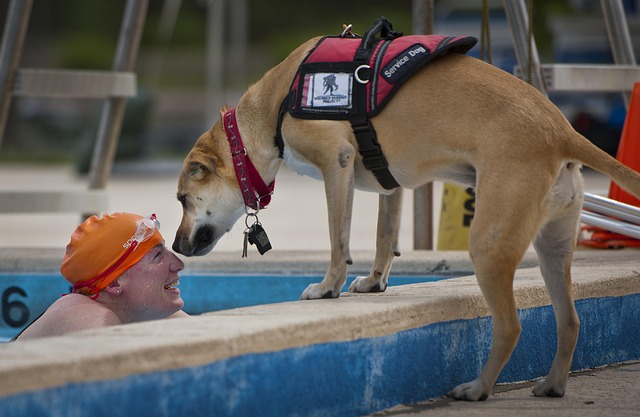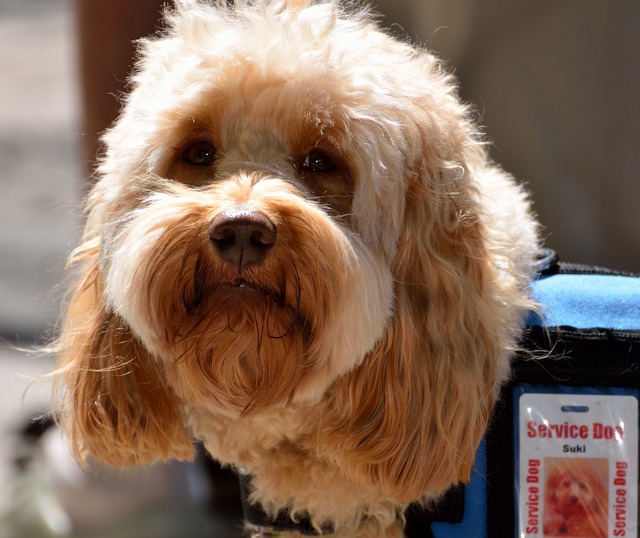Fake service and emotional support animals have been a sore subject for many people recently. Some will say say that “fake” service animals don’t exist. On the other end of the spectrum, some believe no one should bring an animal where they aren’t typically allowed.
The facts are that under the Americans With Disabilities Act (ADA) service animals are allowed everywhere. They are not to be barred from any public place. Their handler is not to be asked why they need assistance, and they do not have to provide any sort of certification or other paperwork for their pet. This is where issues arise.

Service dogs are highly trained animals who spend years working with trainers to perform specific tasks to help their handler function in the world. Some of these dogs are even trained to save a life. Emotional support animals are not trained as rigorously, nor are they permitted everywhere under the ADA. But they are just as important for owners who experience anxiety, are living with PTSD, or suffer other conditions that can be eased with the help of a companion animal. (Read more about the difference between the two here.)
Some people have been taking advantage of the law by faking a disability for the sake of bringing their pet wherever they want. The problem is widespread and severe enough to draw attention from lawmakers. Though we love to see dogs everywhere we go, some pets can be a nuisance if they’re not properly socialized or trained. These people and their pets cause problems for those who genuinely need their animal with them to perform day-to-day tasks.

A Tumblr post recently went viral when user trainingfaith explained how this makes life difficult for her, her service dog, and others like them. She uses two scenarios to illustrate why the issue is troubling.
Scenario 1:
You’re sitting at a cafe with your friend when suddenly a woman walks in with a toy poodle in her purse. The manager at the counter informs her “I’m sorry, but we do not allow dogs”. She replies with a heavy sigh and a “She’s a service dog. She can come with me”. Not knowing much about service dog law, and worrying about getting sued for asking further questions, he sits this woman down at a booth. There, she promptly unzips her purse and places the dog on the booth seat next to her. When the woman’s food comes out, the little dog begs and she feeds her bits off her plate. This dog is not public access trained, and proceeds to bark at those who walk by. This dog is a nuisance and causes many in the restaurant to complain. The manager cannot do anything but inform the unhappy customers that this is a service dog, so he can’t ask her to leave. In the end, it’s the customers who end up leaving.
Now I walk in with my highly trained service dog pressed against my leg in a perfect heel position, and I’m quickly bombarded by the manager telling me “No dogs! No dogs! We ALL know what happened last time”. Confused, I tell him “This is my medical alert and medical response service dog. Her right to accompany me is protected under federal law.” With a sigh, he seats me at a table far away from others where my dog promptly tucks under my feet, out of sight. When my food arrives my dog is still tucked tightly under the table because she knows she’s not supposed to eat when she’s on duty. She stays there ignoring those who walk past for the remainder of my meal. When we leave, a woman by the door exclaims “Woah, I didn’t know there was a dog here!”
See the difference?

Scenario 2:
Scenario number two occurs at a local grocery store when a man decides to bring his certified emotional support animal into the store with him. Upon entering he flashes a fancy ID card and certification papers. This dog is not as unruly as the first, but he still forges ahead of his handler, sniffs the food on display, and may seek attention from those who walk past. You find this dog adorable, and when he and his owner walk past you ask to pet him. The owner says yes and explains how all he had to do was go online, register his dog, and a few weeks later they sent him a vest, ID card, and certification papers.
Now I pull into the same grocery store. I’m in a rush to get an ingredient for a dish I’m making so I hurry into the store with my service dog next to me. I’m quickly stopped by a manager who demands to see my service dog’s certification card. Remember, this is NOT required by law, and most real service dog teams don’t have them. After 15 minutes of trying to educate, pulling up the ADA website on my phone, back and forth bickering, and drawing more of a crowd than I want to describe… I’m finally allowed in. I grab my ingredient, stand in line (where my service dog obediently moves between my legs to make space for those around me), and I get bombarded by people asking to pet my dog. I explain that she’s working, she has a very important job to do, and she’s not allowed to be pet while on duty. People walk away grumbling and complaining about how rude I was when other handlers like the man they met earlier allow their dog to be pet.

In closing:
Moral of the story? Fake service dogs create real problems. The ones who are impacted the most are the true service dog handlers who rely on their dogs every day to help mitigate their disability. How would you feel if everywhere you went, you couldn’t make it 10 feet in the door because people were asking you questions? Imagine how much time that would take out of your already hectic day. Businesses lose customers because word gets out that there are unruly dogs in their store, customers become misinformed and start thinking some of these behaviors are okay, some people even start to believe the lies that anyone can just register their dog online and make him a service dog. The result? MORE fake service dogs. MORE real problems.
What do you think about “fake” service animals? Let us know in the comments on Facebook.
H/T: percolately.com
 Toledo, United States.
Toledo, United States.